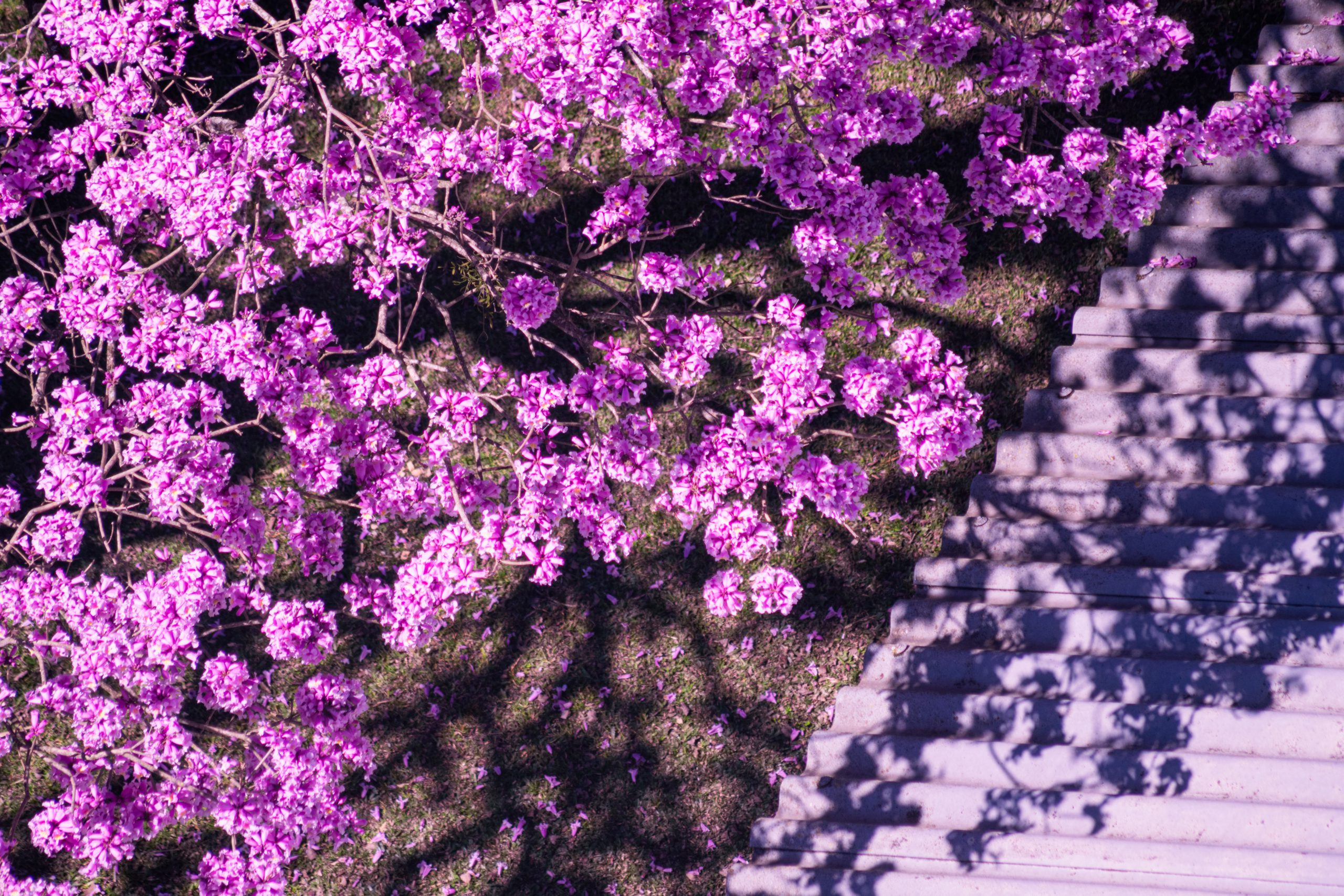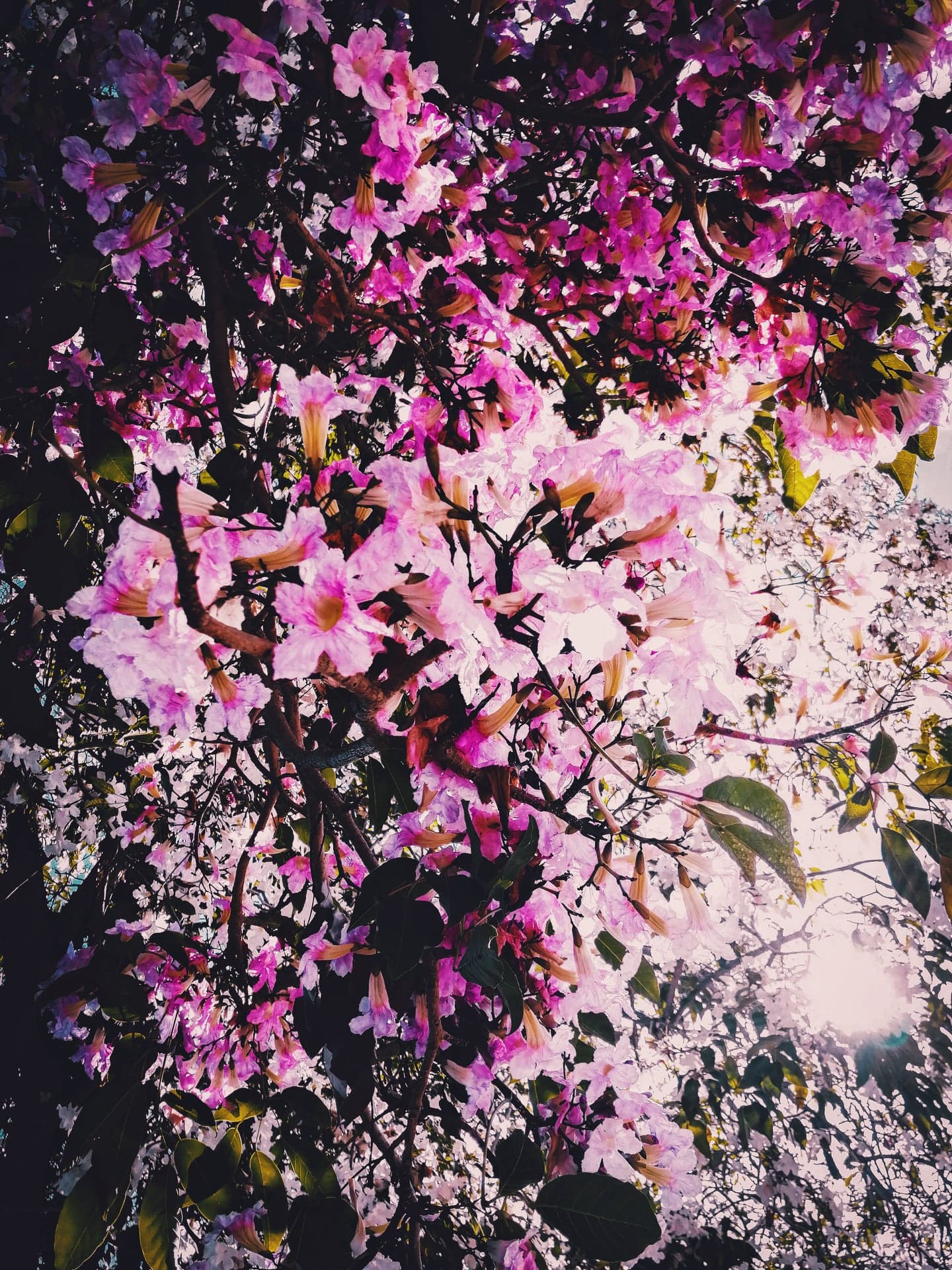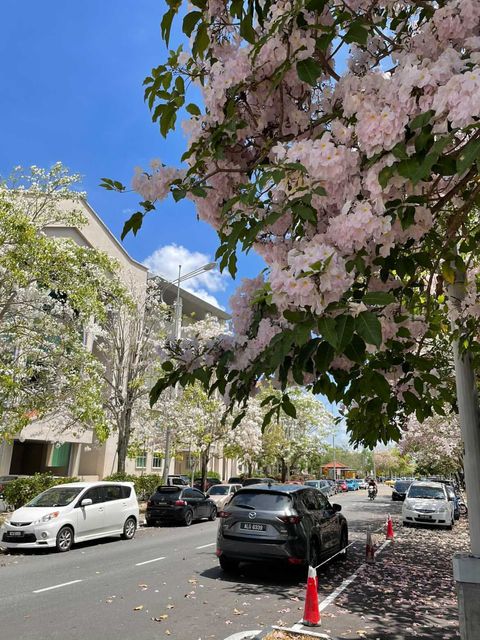
Imagine strolling along the forest walkway and surround yourself with a blossom spread of pink petals. That doesn’t only symbolize the arrival of the spring, but it also allows us to bond closer with nature.
As Malaysians, we always yearn for a trip to Japan so that we could dress up beautifully and snap photos with the cherry blossom trees. That luxurious dream isn’t just an achievable thing when you travel out of Malaysia. Each year around February to April, some places in our country start blossoming with shrubs or trees that are filled with Tecoma rosea. Identified as “sakura season” by locals, these trees received attention from netizens to go outdoors for photo shooting sessions.
There are many places you could see trees like these in Peninsula Malaysia, commonly visible in locations such as (from North to South) Perlis, Langkawi, Alor Setar, Penang, Terengganu, Kuala Lumpur, Petaling Jaya, Melaka, Johor, and more. Who says you should spend so much money on sightseeing in Japan when similar scenery can also be found here?
While now is the time where it starts fading off, it’s also a good opportunity to learn a little more about this voguish plant for knowledge enhancement. Here are some facts we would like to share with you today.
They have got different names

(Tecoma Trees in Sungai Ara, Penang. Photographed by Edmund Ooi Jia Xin)
Although being known as Malaysia Sakura with masses of flowers covering the trees, this species is indeed, not cherry blossom, but it comes with another scientific label as Tecoma.
Apart from the official Tecoma, it’s commonly recognized as trumpet trees in English. There’s also another name for it that goes by Tabebuia rosea or pink poui that originated from the Caribbean. People who speak Spanish typically refer to this plant as roble de sabana (savannah oak) which is widely used in Costa Rica.
As the name of this unique species could be varied in different geographical locations based on its environmental influence, the South Americans prefer to identify them as lapacho or pau d’arco. While it may seem difficult to niche down the right way of calling it, Malaysians would generally go with Tekoma, the Malay translation of Tecoma, or tissue paper trees as an indication of its paper-thin flowers.
Their origin can be traced back to South America

(The view of Tecoma Trees next to the city hall in Brazil. Photo by Mateus Campos Felipe on Unsplash)
Many are used to associating them with sakura which, as result, gives them the perception that Tecoma may come from Japan, or rather from the neighbouring countries within Asia. The mind-blowing fact about its origin is that Tecoma’s native to the Caribbean and South and Central America.
As Tecoma blossoms during the driest and hottest season, it’s not surprising that we could only see it within the timeframe of February to April in Malaysia. Rooted from Bignoniaceae, the flowering plant of the trumpet creeper or catalpa family, it’s naturalized into several locations across the globe such as Oceania, South and Southeast Asia, and Africa due to the hot climates.
Based on the studies by Philips (2015), Tecoma rosea, being classified as one of the most beautiful flowering plants, is the national tree of El Salvador, while Tabebuia impetiginosa is the national flower of Brazil and Paraguay, and Thebebuia chrysantha for Venezuela.
They cure diseases
 (Pink trumpet trees can be used for medical purposes as well. Photographed by Sri Dev)
(Pink trumpet trees can be used for medical purposes as well. Photographed by Sri Dev)
We all know that Tecoma trees blossom beautifully which makes them a suitable photography material for social media trends, but do you know that they are available for medication and supplements as well?
According to Navas (2007), Tecoma trees can cure different diseases- the tree’s bark helps to reduce intestinal parasites, malaria, and uterine cancer; the bark’s decoction is useful for anemia and constipation; the flowers, leaves, and roots’ decoction could cause perspiring which in return, cures fevers and pain, tonsil inflammation, and other diseases.
In Brazil, as also reported by Philips in 2015, Brazilians make bows from the trees for hunting and its herb is still the popular organic remedy within their nation.
They can be harmful too, if overdose
 (Tecoma Trees in PPR Intan Baiduri, KL. Photographed by Sri Dev)
(Tecoma Trees in PPR Intan Baiduri, KL. Photographed by Sri Dev)
While being used to cure sicknesses and strengthen body health, overdosing could cause harm to our body health as well. Enlisted in Global Invasive Species Database (2008), Tecoma stan is classified as a noxious weed that requires stringent control in South Africa and Australia.
There was even a study that explains overconsuming lapachol would accelerate cancer cells and changes in DNA. Furthermore, mild levels of side effects could cause nausea and diarrhea; moderate level causes slow blood clotting, and the worst of all, birth defects and deaths could happen if it’s taken too much.
Thus, some countries do not legalize this as part of the ingredients in medication unless the side effects and safety concerns are carefully addressed by the professionals.
Before we end the article, let us admire the beauty of Tecoma that fills Alor Setar, Kedah with a moderate autumn vibe. Prepare your beating heart- Here it is!

(The view outside of the General Hospital in Alor Setar, Kedah. Photographed by Varman Gunasaegaram)
It’s important to pick up some knowledge about Tecoma trees so that we could appreciate their nature from a broader perspective. We hope that the information given in this article will shed some light on their scientific discovery that you have not known before.
(Featured Image Credit: Photo by Mateus Campos Felipe on Unsplash)


0 Comments